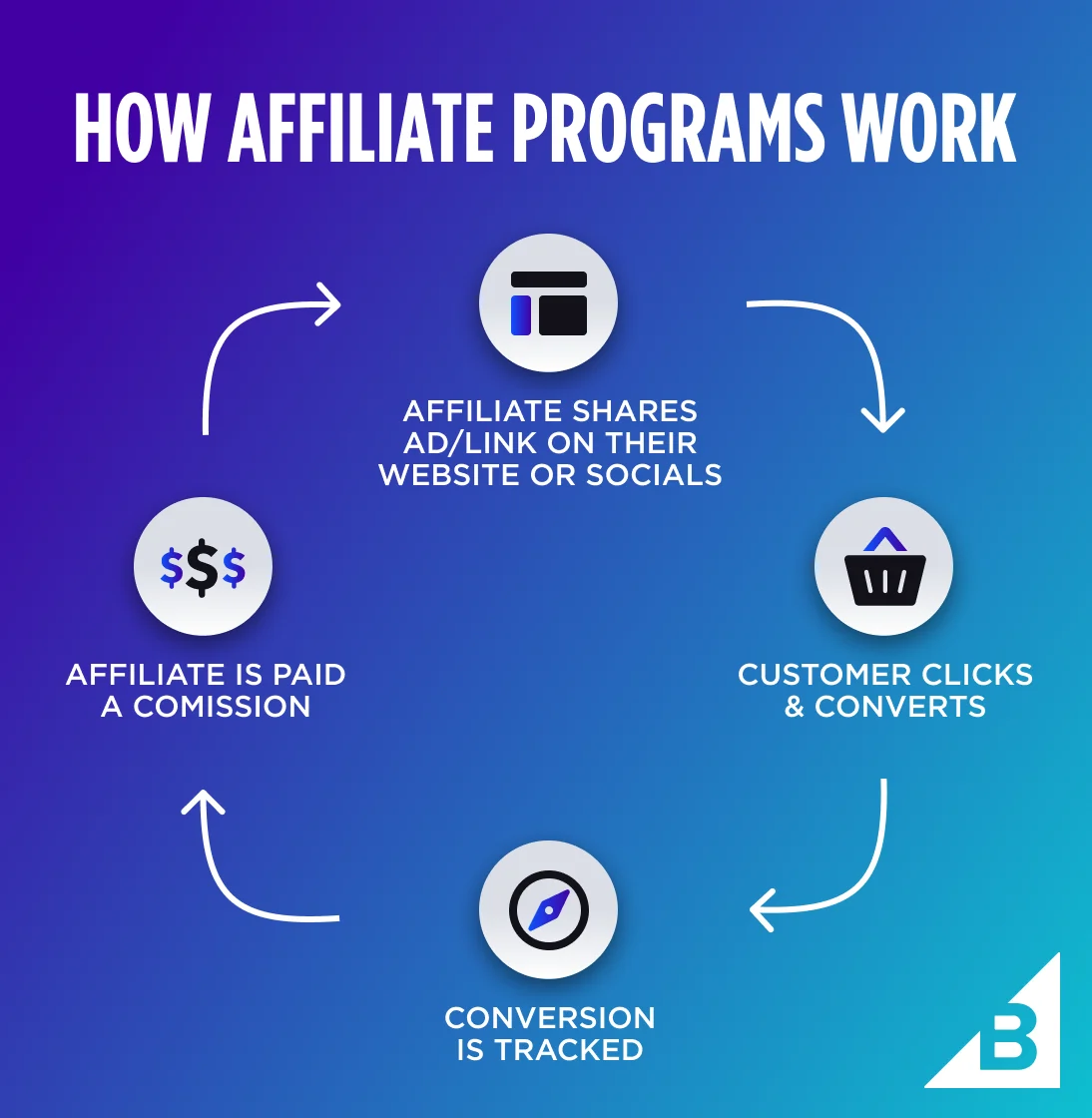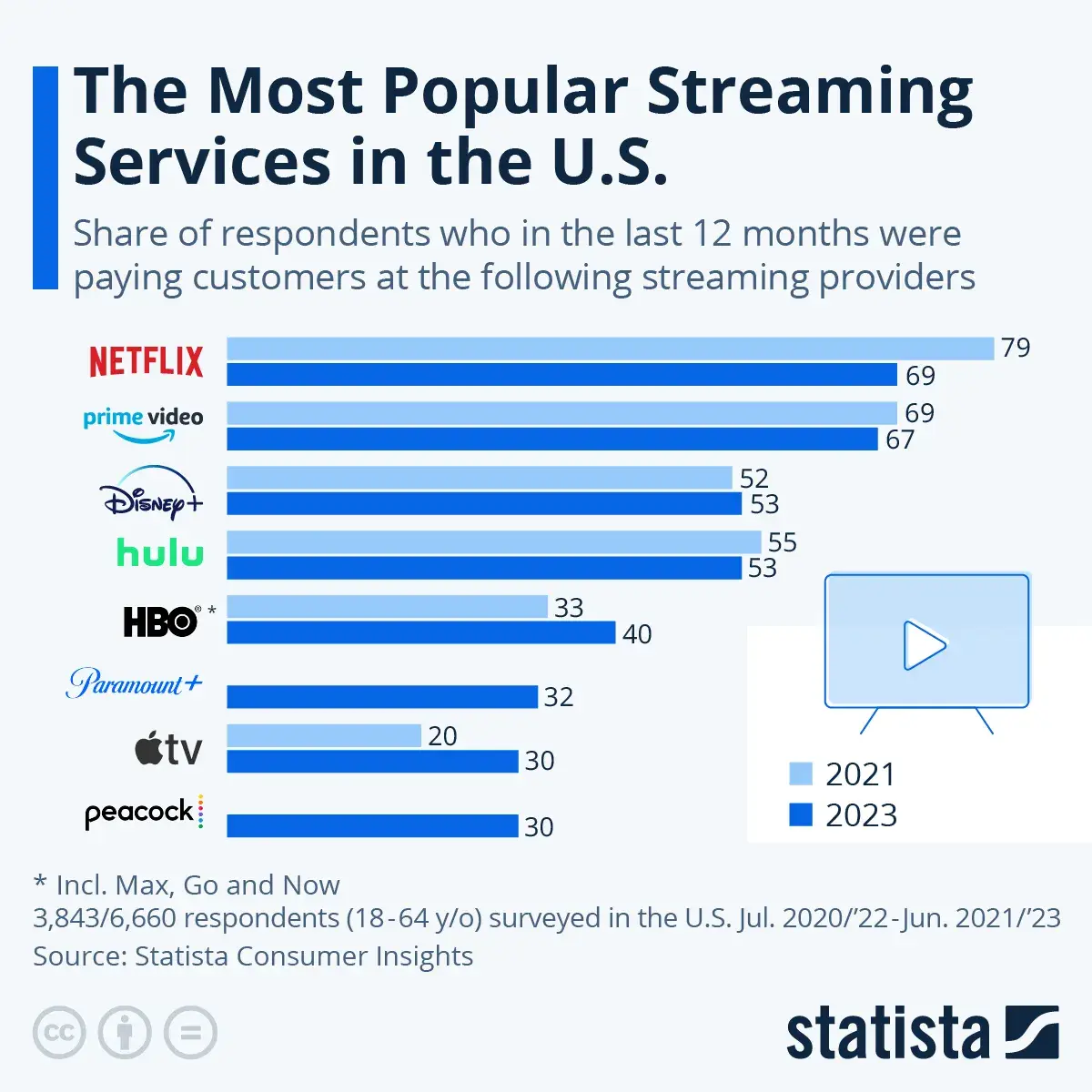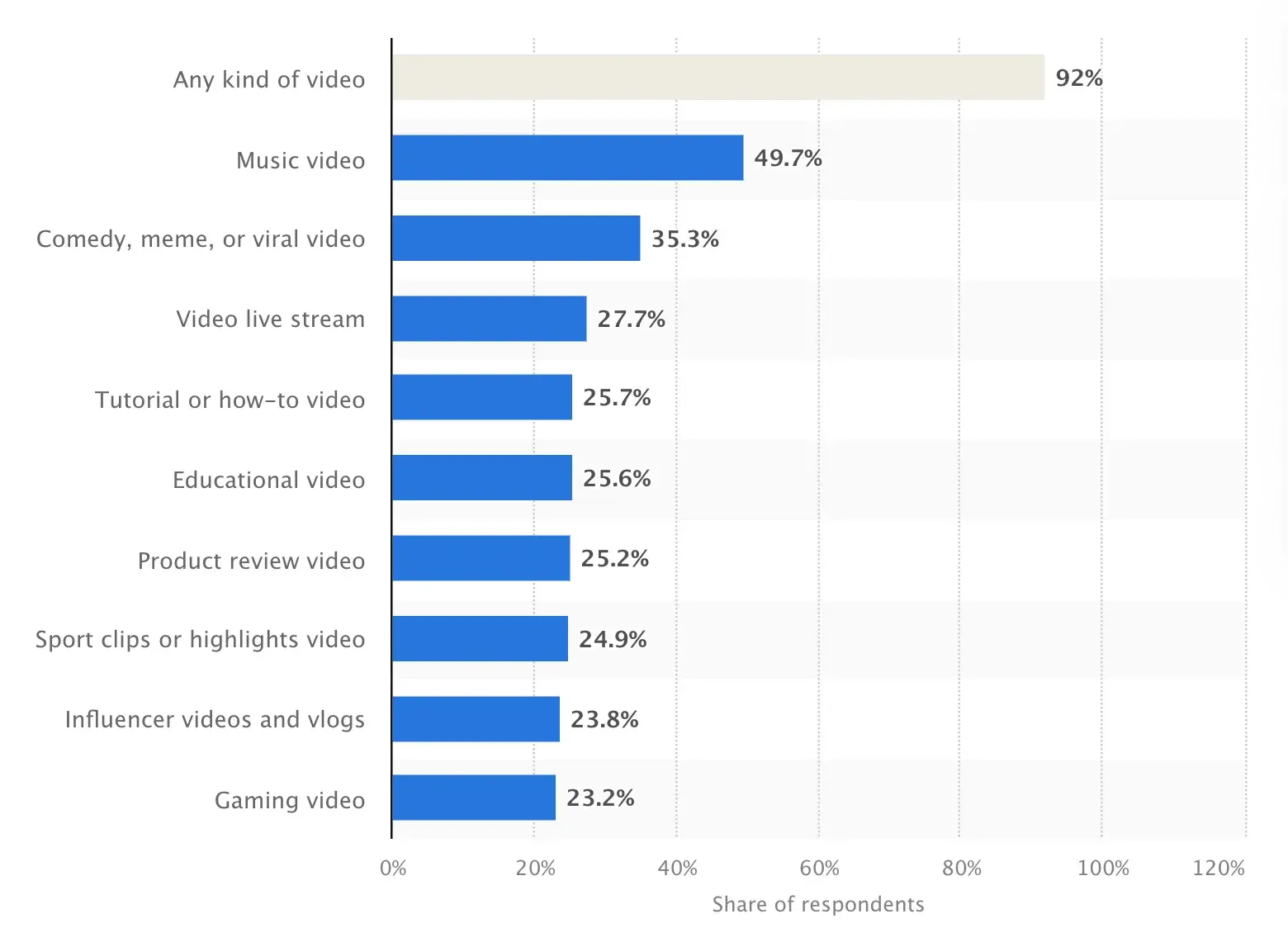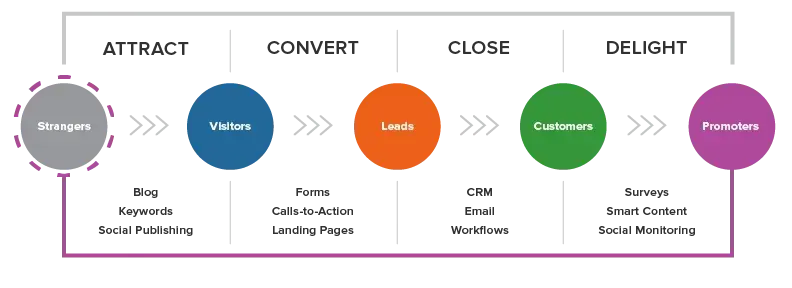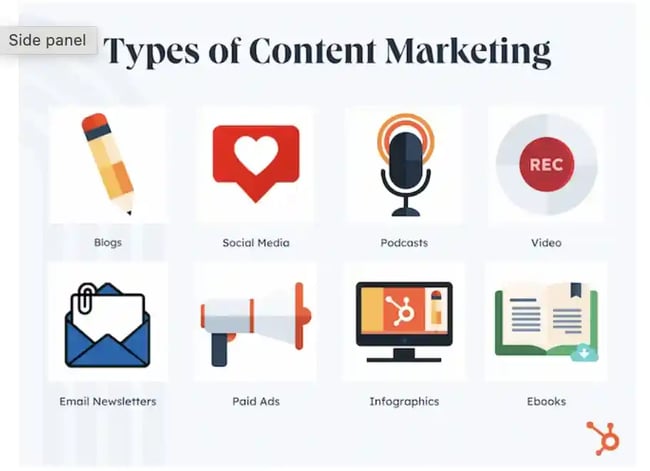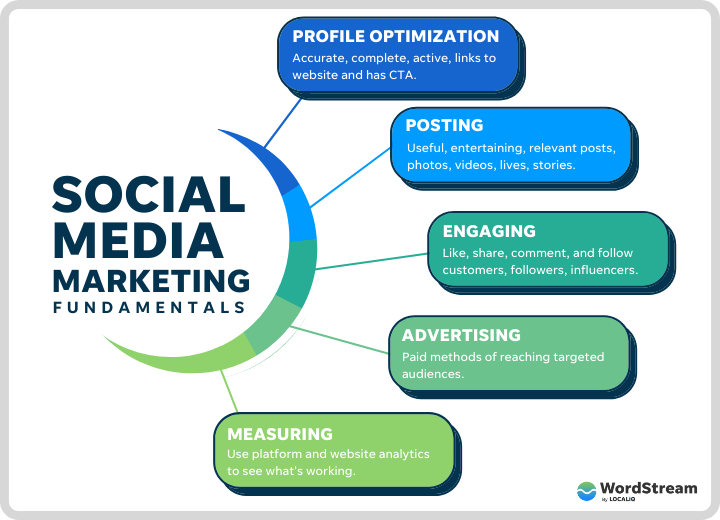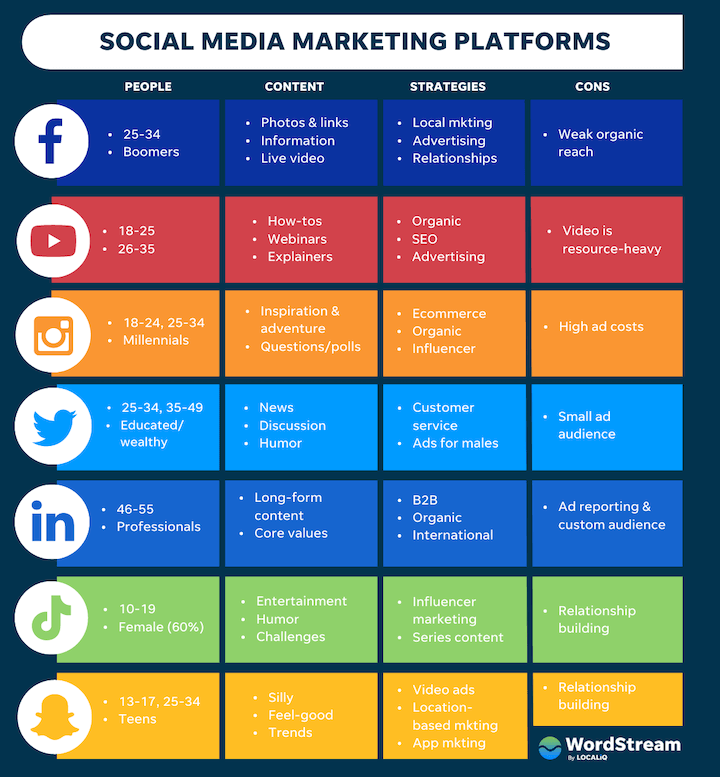1. Online Content Marketing
Online content marketing refers to any material you publish online, but more specifically, it refers to your web pages.
A strong online content marketing strategy will help you rank higher in the search engine results pages (SERPs). The outcome? You get in front of the right people at the right time.
HubSpot’s homepage is one example. This page immediately engages visitors with specific content about our products.
2. Social Media Content Marketing
With over 4.5 billion global social media users, it’s easy to understand why many businesses invest in social media marketing.
There are many platforms to work with, including Facebook, Instagram, Pinterest, X, LinkedIn, and Snapchat. Each platform offers several ways to create and share content, such as photos, live videos, pre-recorded videos, and stories.
Featured Resource: Social Media Content Calendar
3. Infographic Content Marketing
Infographics display content, information, and data in an easy-to-understand graphic format. With a mix of simple wording, short statements, and clear images, infographics are a great way to communicate your content effectively. They work well if you’re trying to simplify an educational or complex topic so all audience members can understand it.
Featured Resource:15 Free Infographic Templates
4. Blog Content Marketing
Blogs are a powerful type of inbound content that allows you to be creative in your choice of topic and writing.
With a blog, you can promote your related content with links, add social share buttons, and incorporate product information.
Featured Resource:Start a Successful Blog
5. Podcast Content Marketing
Experts predict that over 71 million people will listen to podcasts in 2025.
That’s 10 million more than the current listeners across the Spotify and Apple Podcast platforms. For this reason, many businesses and media outlets create and share their own podcasts.
Podcasts allow for a lot of creativity, as they can be about any topic of choice.
Plus, you decide on other factors related to the podcast. These factors include the cadence of episodes, podcast guests, where you advertise the podcast, and each episode’s length.
Featured Resource:How to Start a Podcast
6. Video Content Marketing
According to Wyzowl research, 91% of businesses use video as a marketing tool.
Video marketing can help build a strong bond with your audience, boost conversions, and improve ROI. You may choose to share your video content on social media platforms, landing pages, or on a co-marketer’s website.
Featured Resource:The Ultimate Video Marketing Starter Pack
7. Paid Ad Content Marketing
Paid ads can help you reach a broad audience and allow you to position yourself in all the places you want to be seen — paid ads are especially beneficial when paired with inbound marketing.
There are many places you can share paid ads, including on social media, landing pages, banners, and sponsored content.





).png)





